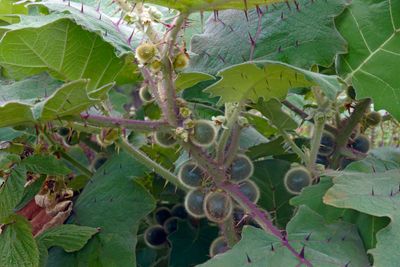Naranjilla Propagation
It is not difficult to propagate this plant, but be prepared with long sleeves and heavy gloves, as the spiny leaves can be painful. Or look for the spineless types, not as readily available, but sometimes sold in exotic nurseries.
How to Propagate Naranjilla Seed
Most grow little orange from seeds. Seeds must be washed, air dried, and treated with a powdered fungicide. This helps to somewhat decrease the root-knot nematodes that occasionally plaque the plant. According to naranjilla propagation information, seeds are best sprouted in January (winter) and kept inside until soil temperatures warm to 62 degrees F. (17 C.). Treat seeds as you would when sprouting tomato seeds. Fruit appears 10 to 12 months after planting seeds out. That said, it does not always fruit in the first year. Plant seeds into a partially shady area, as naranjilla cannot grow in full sun. It prefers temperatures below 85 degrees F. (29 C.). Once it begins fruiting seasonally, it will fruit for three years. A sub-tropical plant, naranjilla self-seeds readily in areas without frost or freeze. When growing in colder areas, winter protection is needed for this plant. Growing in a large container allows the plant to be moved indoors.
Other Methods for Propagating Naranjilla Trees
To get started with growing new naranjilla fruit trees, you may want to graft a small, healthy limb into a rootstock that deters the root-knot nematodes. Sources say it can be cleft-grafted onto potato tree seedlings (S. macranthum) that have grown 2 feet (61 cm.) and cut back to about 1 foot (31 cm.), split down the center. The tree may also be propagated by hardwood cuttings. Make sure conditions in your area support growing naranjilla trees for best results.
